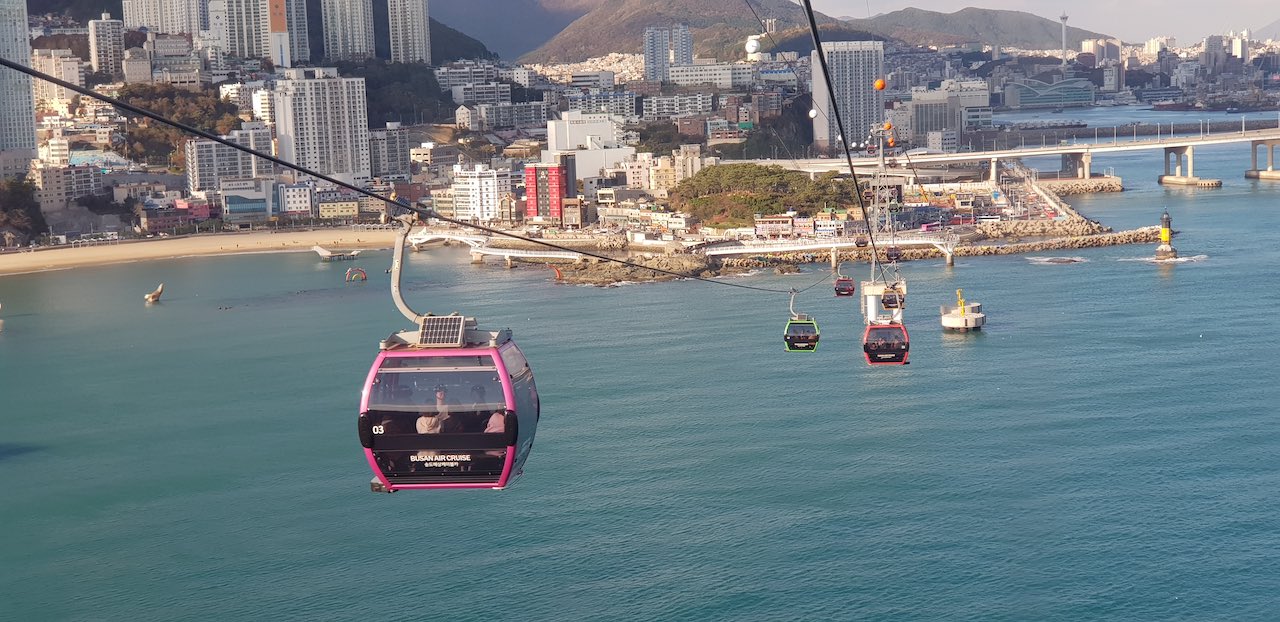South Korea’s second city is often overlooked by western travellers in favour of Seoul, the ultra-modern capital in the north of the country, but it really should be firmly on the radar of those looking for somewhere warm and cultural to explore. What makes Busan a beacon of light in South Korea is its world-famous fireworks festival (forgive the pun!) that attracts spectators from around the world, but also its scenic coastal cliffs and forests, historic temples and tasty street side food.
Busan
South Korea’s second city is just a 2.5-hour journey from Seoul on the fast and efficient KTX high-speed railway, or less than an hour by air. Unlike most of the Korean Peninsula, Busan was largely spared the devastation caused by the Korean War in the 1950s, but its legacy is still visible throughout this city of towering glass skyscrapers, record-breaking shopping centres, and famous meeting venues for heads of state.
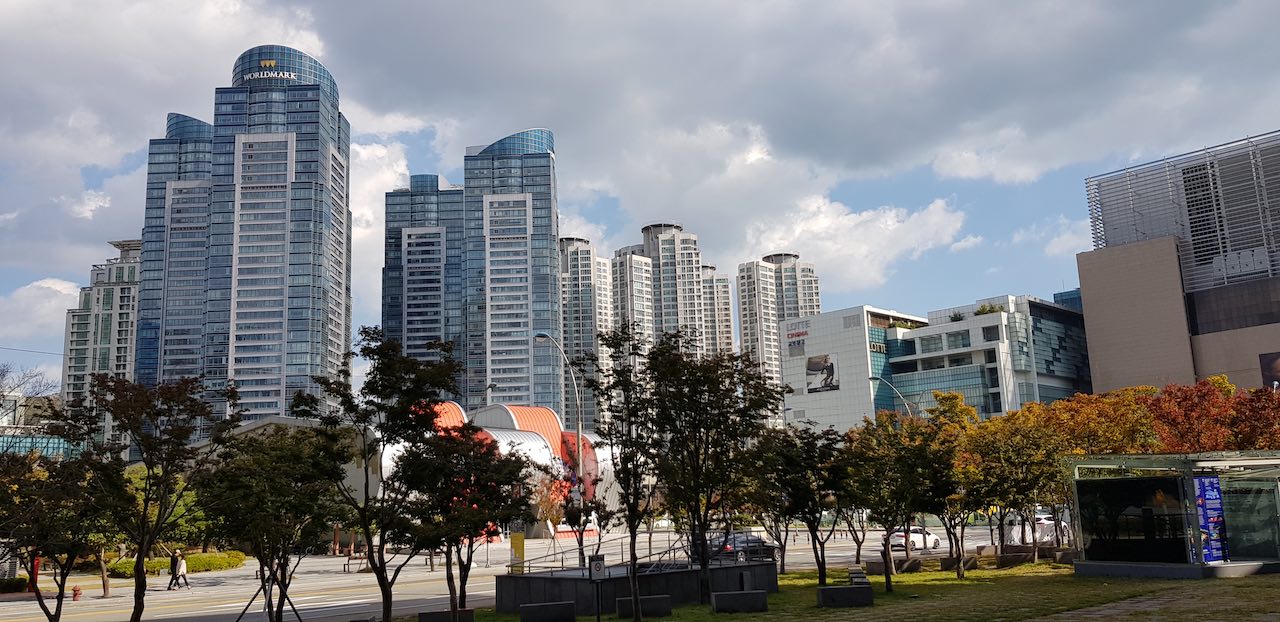
(c) Joe Worthington
Busan is a surprisingly large city, connected by a series of seemingly endless bridges that connect pristine beaches and quiet forested areas to the bustling central downtown areas. The city has no shortage of record-breaking attractions, including the world’s largest shopping mall, the world’s largest outdoor cinema, and the world’s largest fireworks festival. The unbelievably inexpensive metro system conveniently connects the main settlements to the train station and tourist areas.
United Nations Memorial Cemetery in Korea
Although Busan was spared from much of the large-scale bombardment that the rest of the country endured during the Korean War, the city is the site of the United Nations Memorial Cemetery in Korea. The sobering sight of 2,300 allied graves, of all different shapes, styles and colours spread over an area of 35 acres, is something that visitors to Busan simply cannot miss.
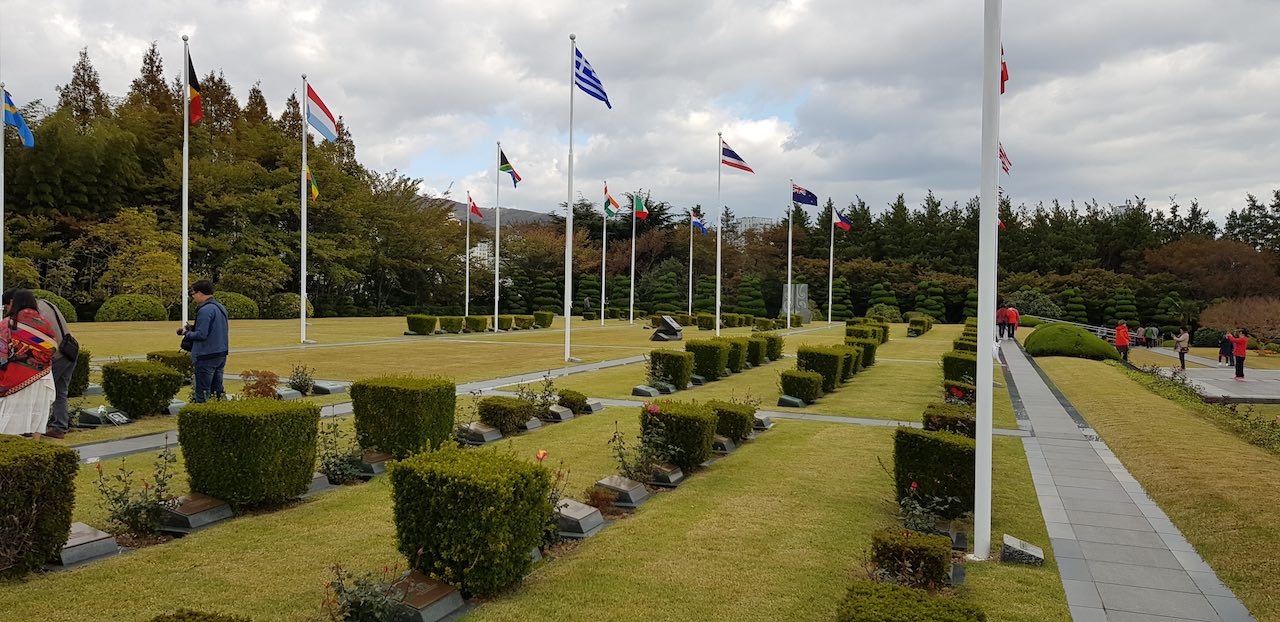
(c) Joe Worthington
The only United Nations cemetery in the world attracts both veterans and sightseers alike, all going to pay their respects to the many who fought for the democratic values of the South Korea of today. The graves are divided into 22 distinct sections, each denoting a different nationality that is buried in the cemetery. British gravestones stand in neat rows behind a stone lion, New Zealand graves behind a traditional Maori carved stone, Turkish graves in their unique Ottoman style, and Korean graves in their distinct tall, narrow style.
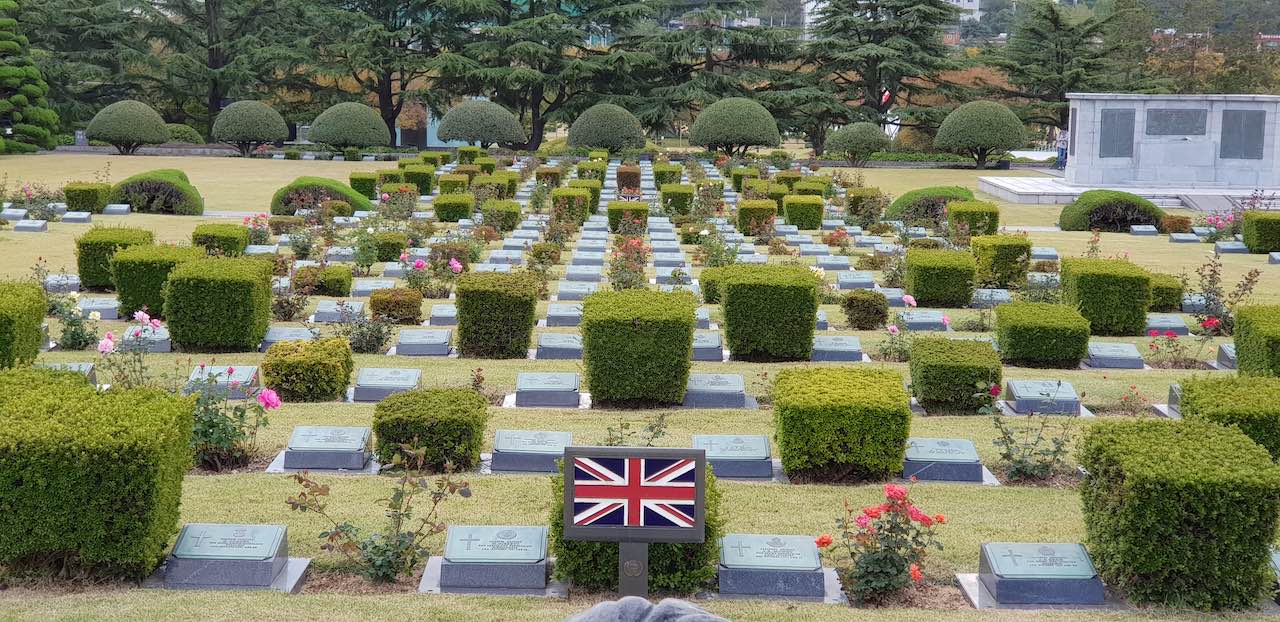
(c) Joe Worthington
At one end of the cemetery you will find a polished marble wall listing the names of each and every allied soldier who died fighting for South Korean freedom surrounding a water feature. The United States lost 36,492 troops during the war, but they were all repatriated after the war back to America, and the second largest group of war dead were the British, with 1,177 who lost their life. Such is the feeling of comradeship, a number of veterans have declared that after they die, they want their ashes to be interred in the cemetery beside their fellow soldiers.
Jagalchi Market
Unlike in the west, South Korean shopping is still dominated by its sprawling markets and hawkers selling the freshest seafood and freshly-cooked foods made-to-order. Jagalchi Market is the largest seafood market in Korea, with primarily older women selling crabs, fish of every size and shape, live octopus, starfish, sea cucumbers, giving it the nickname “Jagalchi ajumma”, the word ‘ajumma’ meaning middle-aged or married woman in Korean.
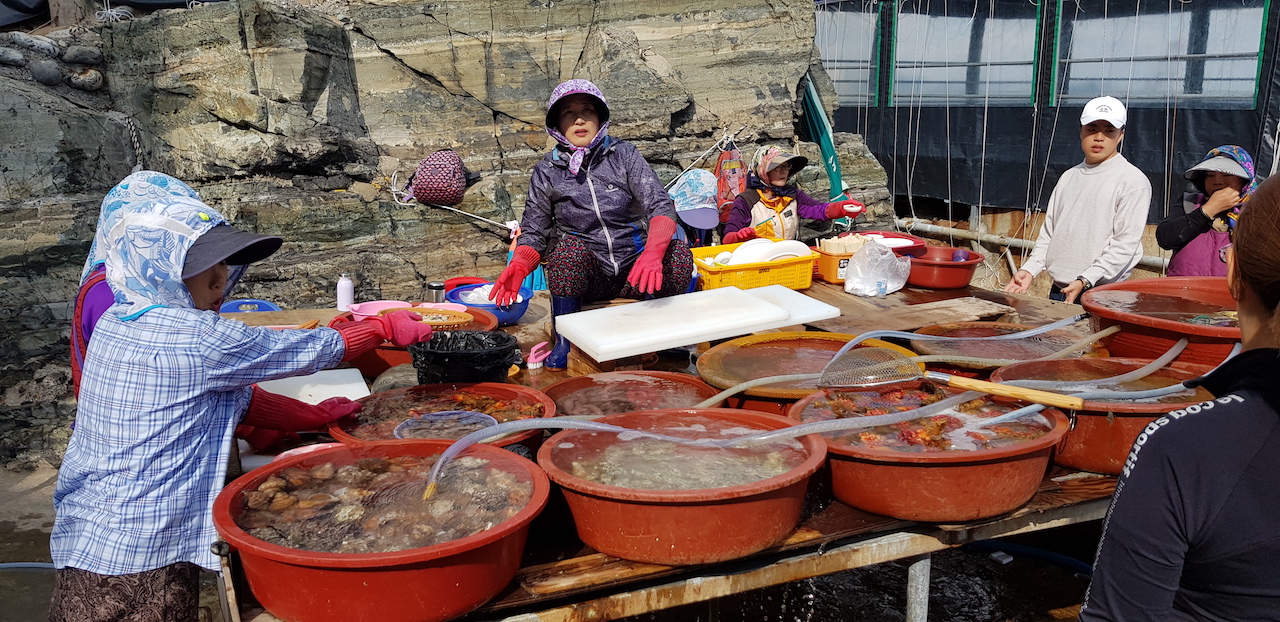
(c) Joe Worthington
The market is an absolute maze. The sights of locals hawking their fish and vegetables all around, smells of fish plucked straight from the sea and seafood boiling in huge pans, and the sounds of Koreans haggling for the best prices is enough to confuse the senses but wait until you actually try the food on offer.
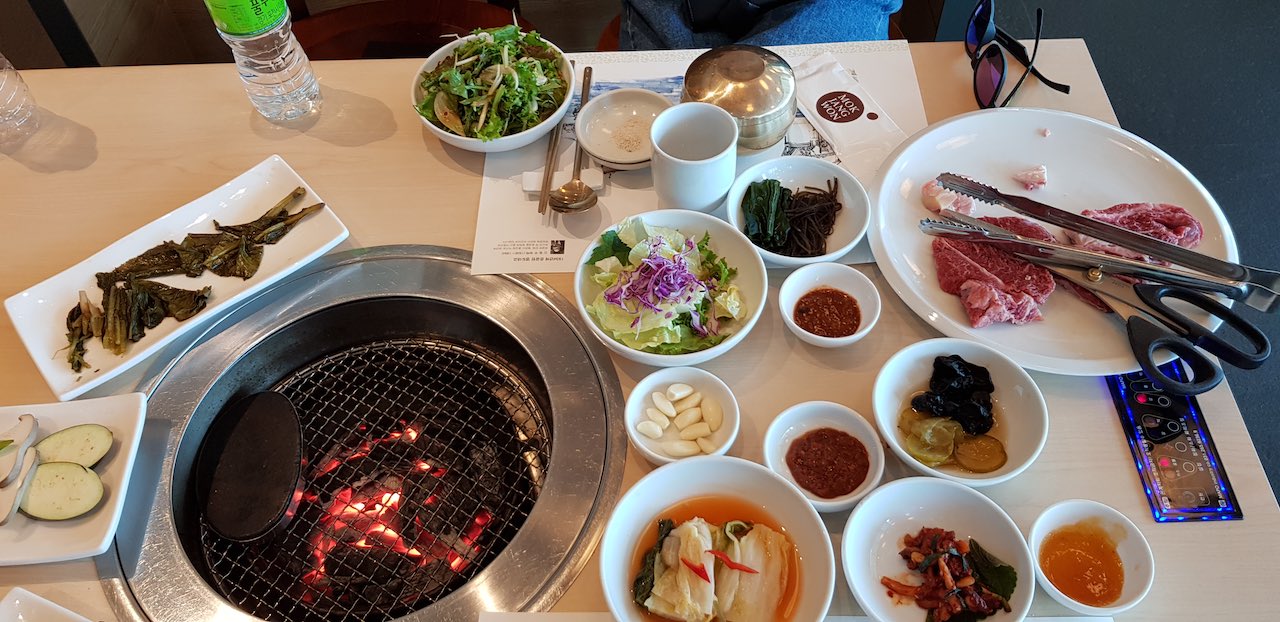
(c) Joe Worthington
If you are feeling brave, you could try live octopus, its suckers clinging to your tongue as you try to swallow it whole. But if you aren’t feeling quite as adventurous, there are other foods than just seafood on sale in and around Jagalchi. Kimchi, cabbage that has been preserved in chili sauce and salt, is served with every meal, so there is no worry that you won’t get your daily cabbage fix. You are also likely to find tteokbokki (fried rice cakes) coated in gochujang sauce (Korean chili paste) grilling on griddles, buchimgae pancakes frying with their eggy and vegetable goodness, and jjigae (stew) boiling in huge vast with every ingredient imaginable thrown in for good measure.
Haedong Yonggungsa Seaside Temple
There is no shortage of temples in Busan – it was only in the mid-20th century that Korea opened up from self-imposed isolation after all, and Buddhism was the state religion until then. The Haedong Yonggungsa Temple complex is different though, it is located on a multi-level cliff beside the inviting light blue waters where the Yellow Sea and East Sea meet.
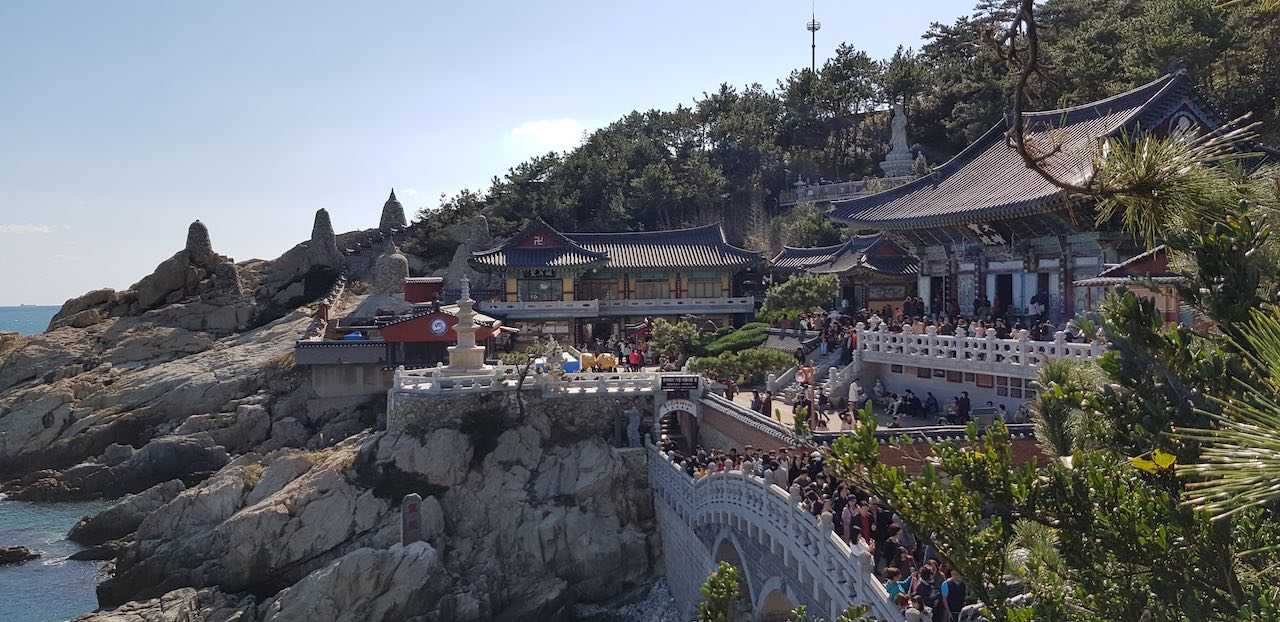
(c) Joe Worthington
Dating back to the year 1376 during the Goryeo Dynasty, the temple was built by one of the most renowned teachers in Korean Buddhism, Naong. There are a number of temples and shrines throughout the temple complex, each dedicated to different gods and their individual responsibilities. There is a towering pagoda dedicated to a monk who died serving the temple, a three-storey pagoda with four lions denoting joy, anger, sadness and happiness, a temple dedicated to the seawater great goddess buddha (Haesu Gwaneum Daebul), and the Yongwangdang shrine.
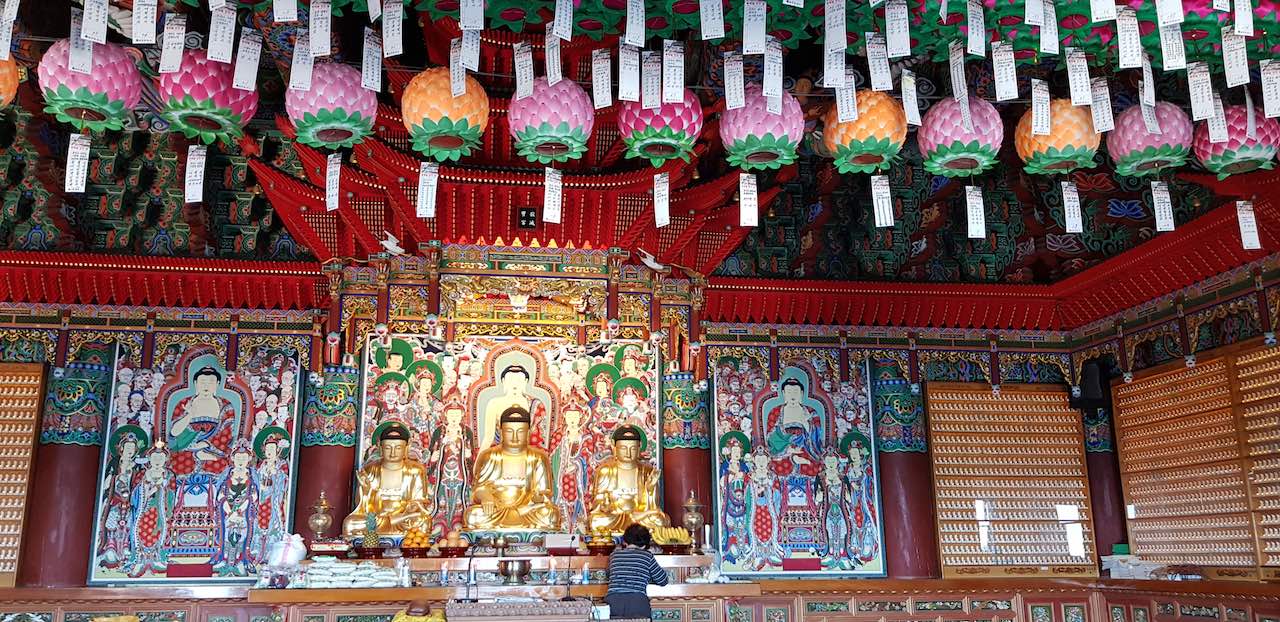
(c) Joe Worthington
The view up at the temple and the surrounding tree-coated cliffs jutting out of the gently lapping sea from the bottom of the 108 stone steps is simply spectacular. On a clear day, the sun casts growing shadows from the towering pagodas as though the spirits of the gods are reaching out from the temples.
Busan International Fireworks Festival
For 14 years, Busan has held a world-class fireworks festival that has attracted increasing numbers of expert pyrotechnicians and spectators from around the world. Every October, more than 1 million people fill Gwangalli beach to watch some of the most extraordinary fireworks demonstrations.
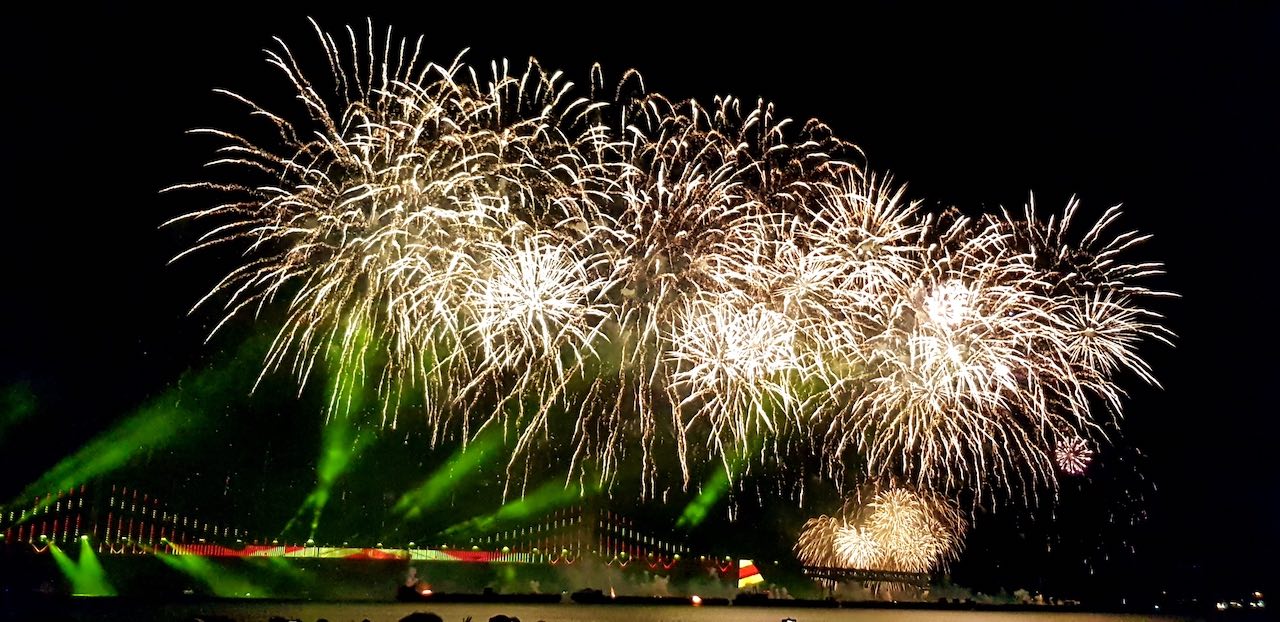
(c) Joe Worthington
For around 1 hour, fireworks of every shape and colour imaginable fill the skies above the 1.4km Gwangan bridge. Thundering bangs and cracks echo through the air as people sitting on the sandy beach, chilly winds blowing from the sea, gaze up at the lit skies in amazement. Fireworks experts from across the world come together to put on a show worthy of one of the world’s top fireworks showcases. Reds, oranges, blues, greens, yellows and purples flash across the skies, creating fountain shapes, heart shapes, rain showers, and stars.
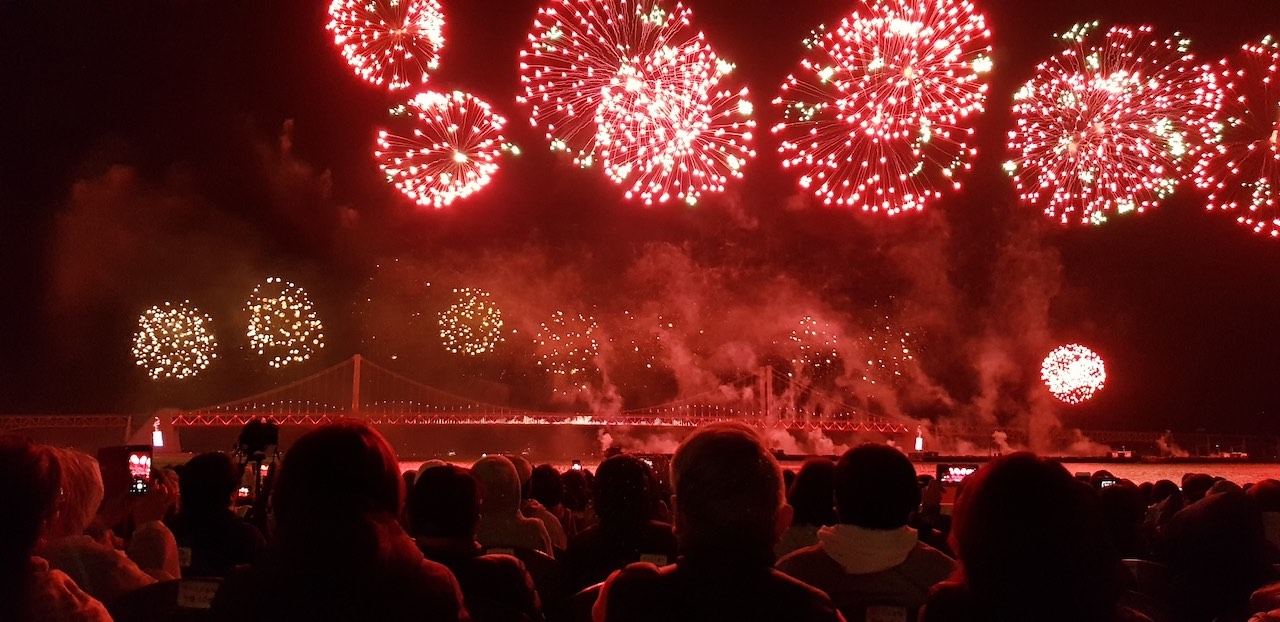
(c) Joe Worthington
Busan’s fireworks festival is the pinnacle of Busan’s annual events calendar and it puts South Korea’s second city on the map of places to visit.
Fact File
FLY: Korean Air flies direct to Seoul Incheon from London Heathrow, and then direct to Busan without having to clear immigration in Seoul.
TRAIN: It’s a 2.5-hour journey from Seoul to Busan by the KTX high-speed train.
STAY: The Ramada Encore Haeundae hotel a short walk from the beach and on one of the busiest restaurant streets in Busan.
MORE INFO: Korea Tourism Organization, who organised and funded this trip, has a wealth of information available on Busan and South Korea.

